Compare the product ,
⎛⎜⎝−516−1−20⎞⎟⎠(4−5−1561)⎛⎜⎝5−41⎞⎟⎠
The correct Answer is:⎡⎢⎣−193232−78⎤⎥⎦
Step by step video, text & image solution for Compare the product , ({:(-5, 1),(6, -1), (-2, 0):}) ({:(4, -5, -1), (5, 6, 1):})((5), (-4), (1)) by Maths experts to help you in doubts & scoring excellent marks in Class 10 exams.
Updated on:21/07/2023Topper's Solved these Questions
- MATRICESBook:PEARSON IIT JEE FOUNDATIONChapter:MATRICESExercise:ESSAY TYPE QUESTIONS
Explore 5 Videos
- MATRICESBook:PEARSON IIT JEE FOUNDATIONChapter:MATRICESExercise:EXERCISE CONCEPT APPLICATION (LEVEL 1)
Explore 30 Videos
- MATRICESBook:PEARSON IIT JEE FOUNDATIONChapter:MATRICESExercise:EXERCISE (VERY SHORT ANSWER TYPE QUESTIONS)
Explore 30 Videos
- MATHEMATICAL INDUCTION AND BIONOMIAL THEOREMBook:PEARSON IIT JEE FOUNDATIONChapter:MATHEMATICAL INDUCTION AND BIONOMIAL THEOREMExercise:LEVEL 3
Explore 15 Videos
- MENSURATIONBook:PEARSON IIT JEE FOUNDATIONChapter:MENSURATIONExercise:Level 3
Explore 21 Videos
Similar Questions
For teaching the concept of probability, Mrs. Verma decided to use two dice. Shet took a pair of die and write all the possible outcomes on the blackboard. All possible outcomes wave:
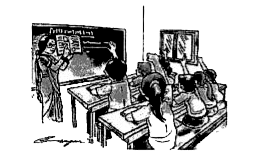
(1,1), (1,2), (1,3), (1,4), (1,5), (1,6)
(2,1), (2,2), (2,3), (2,4), (2,5), (2,6)
(3,1), (3,2), (3,3), (3,4), (3,5), (3,6)
(4,1), (4,2), (4,3), (4,4), (4,5), (4,6)
(5,1), (5,2), (5,3), (5,4), (5,5), (5,6)
(6,1), (6,2), (6,3), (6,4), (6,5), (6,6)
The probability that 5 will come up at least once is:
View SolutionFor teaching the concept of probability, Mrs. Verma decided to use two dice. Shet took a pair of die and write all the possible outcomes on the blackboard. All possible outcomes wave:
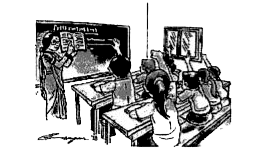
(1,1), (1,2), (1,3), (1,4), (1,5), (1,6)
(2,1), (2,2), (2,3), (2,4), (2,5), (2,6)
(3,1), (3,2), (3,3), (3,4), (3,5), (3,6)
(4,1), (4,2), (4,3), (4,4), (4,5), (4,6)
(5,1), (5,2), (5,3), (5,4), (5,5), (5,6)
(6,1), (6,2), (6,3), (6,4), (6,5), (6,6)
The probability that 6 will come up on both dice is
View Solution
Knowledge Check
If A⎛⎜⎝1343−15−24−3⎞⎟⎠=⎛⎜⎝3−15134+4−86⎞⎟⎠, then A=
A⎛⎜⎝10001000−2⎞⎟⎠B⎛⎜⎝010100001⎞⎟⎠C⎛⎜⎝10010000−2⎞⎟⎠D⎛⎜⎝01010000−2⎞⎟⎠
For teaching the concept of probability, Mrs. Verma decided to use two dice. Shet took a pair of die and write all the possible outcomes on the blackboard. All possible outcomes wave:
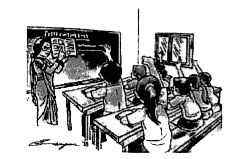
(1,1), (1,2), (1,3), (1,4), (1,5), (1,6)
(2,1), (2,2), (2,3), (2,4), (2,5), (2,6)
(3,1), (3,2), (3,3), (3,4), (3,5), (3,6)
(4,1), (4,2), (4,3), (4,4), (4,5), (4,6)
(5,1), (5,2), (5,3), (5,4), (5,5), (5,6)
(6,1), (6,2), (6,3), (6,4), (6,5), (6,6)
The probability that 4 will not come up on either of them is
View SolutionFor teaching the concept of probability, Mrs. Verma decided to use two dice. Shet took a pair of die and write all the possible outcomes on the blackboard. All possible outcomes wave:
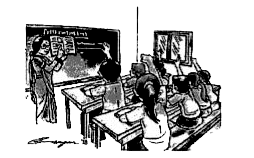
(1,1), (1,2), (1,3), (1,4), (1,5), (1,6)
(2,1), (2,2), (2,3), (2,4), (2,5), (2,6)
(3,1), (3,2), (3,3), (3,4), (3,5), (3,6)
(4,1), (4,2), (4,3), (4,4), (4,5), (4,6)
(5,1), (5,2), (5,3), (5,4), (5,5), (5,6)
(6,1), (6,2), (6,3), (6,4), (6,5), (6,6)
The probability that both numbers comes up are even, is
View SolutionFor teaching the concept of probability, Mrs. Verma decided to use two dice. Shet took a pair of die and write all the possible outcomes on the blackboard. All possible outcomes wave:
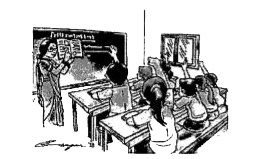
(1,1), (1,2), (1,3), (1,4), (1,5), (1,6)
(2,1), (2,2), (2,3), (2,4), (2,5), (2,6)
(3,1), (3,2), (3,3), (3,4), (3,5), (3,6)
(4,1), (4,2), (4,3), (4,4), (4,5), (4,6)
(5,1), (5,2), (5,3), (5,4), (5,5), (5,6)
(6,1), (6,2), (6,3), (6,4), (6,5), (6,6)
The probabiliyt that both numbers comes up are prime numbers, is
View SolutionFind the product of ⎡⎢⎣234345456⎤⎥⎦⎡⎢⎣1−30230⎤⎥⎦
View SolutionIn each of the question, arrange the given words in which they occur in the dictionary and then choose the correct sequence.
1) Intrinsic
2) Intrude
3) Intricate
4) Introvert
5) Intrigue
6) Introduce
1) 3, 5, 1, 4, 6, 2
2) 3, 5, 1, 6, 4, 2
3) 3, 1, 5, 4, 6, 2
4) 5, 1, 3, 2, 4, 6
5) None of these
View SolutionExamine each of the following relations given below and state in each case, giving reasons whether it is a function or not ?
(i) R={(4,1),(5,1),(6,7)}
(ii) R={(2,3),(2,5),(3,3),(6,6)}
(iii) R={(1,2),(2,3),(3,4),(4,5),(5,6),(6,7)}
(iv) R={(1,1),(2,1),(3,1),(4,1),(5,1)}
View SolutionLet A=[01−25−1−4],B=[1−3−10−2 5] and C=[2−51−4 06].
Compute 5A−3B+4C.
View Solution